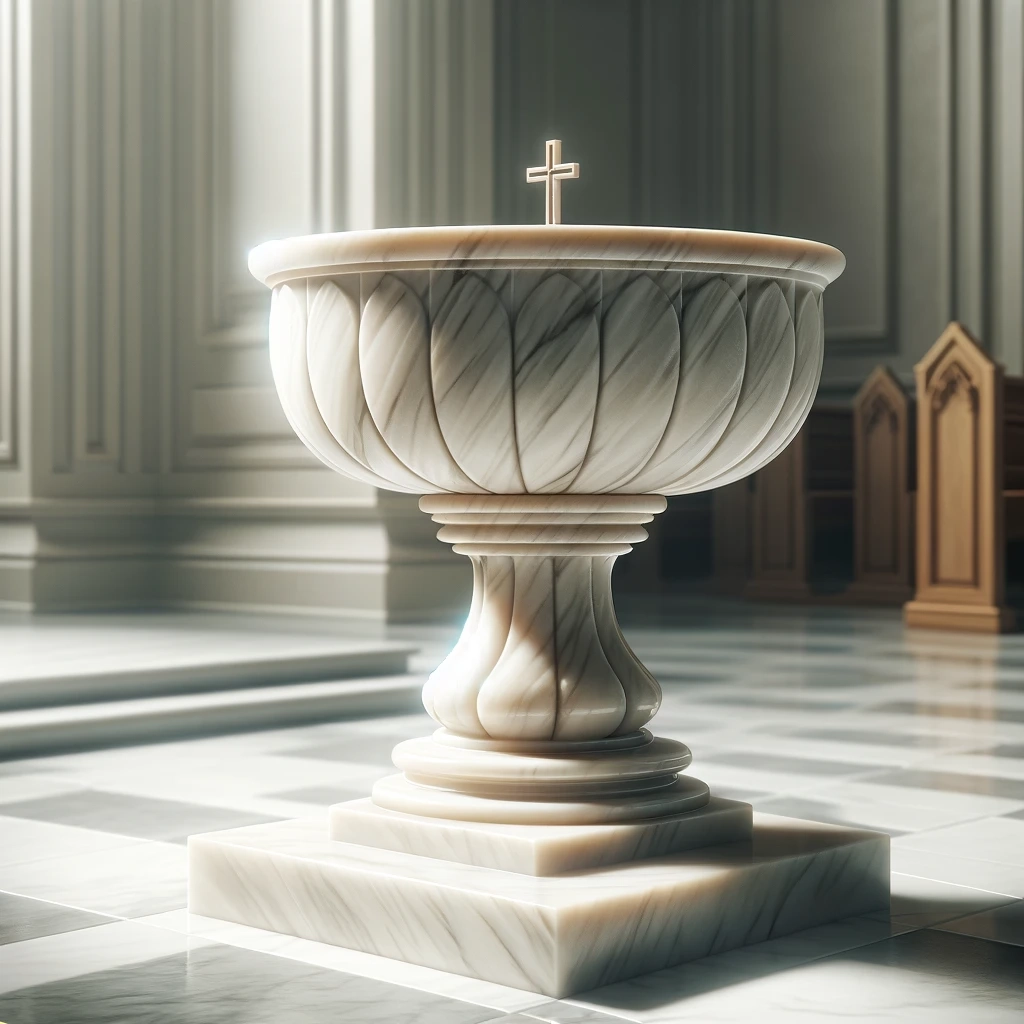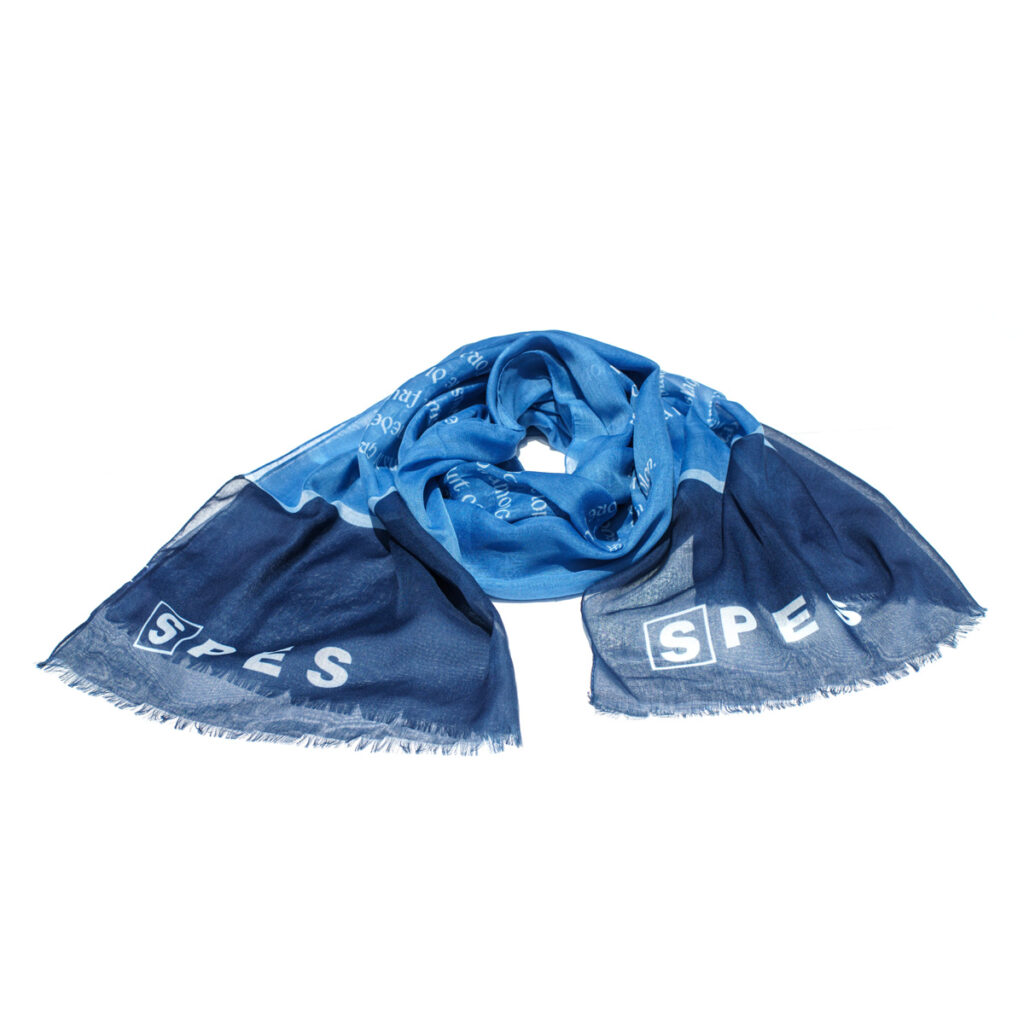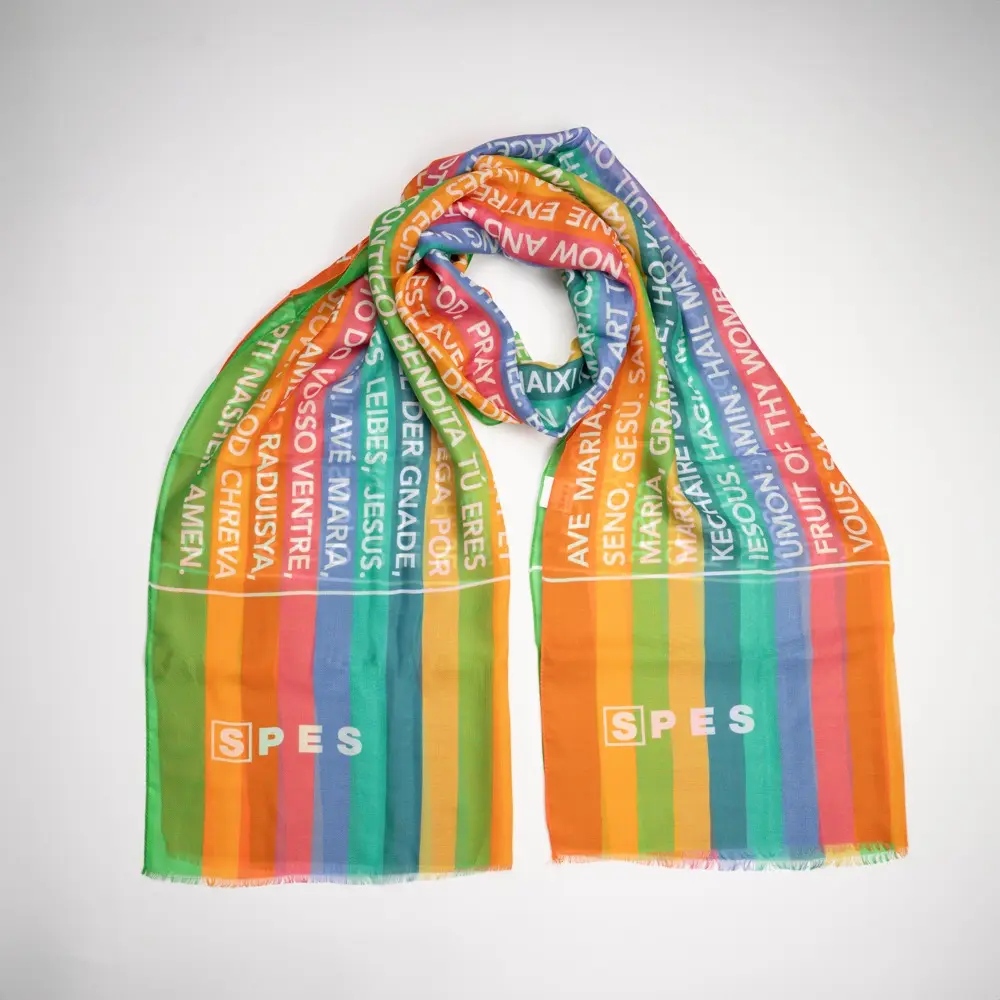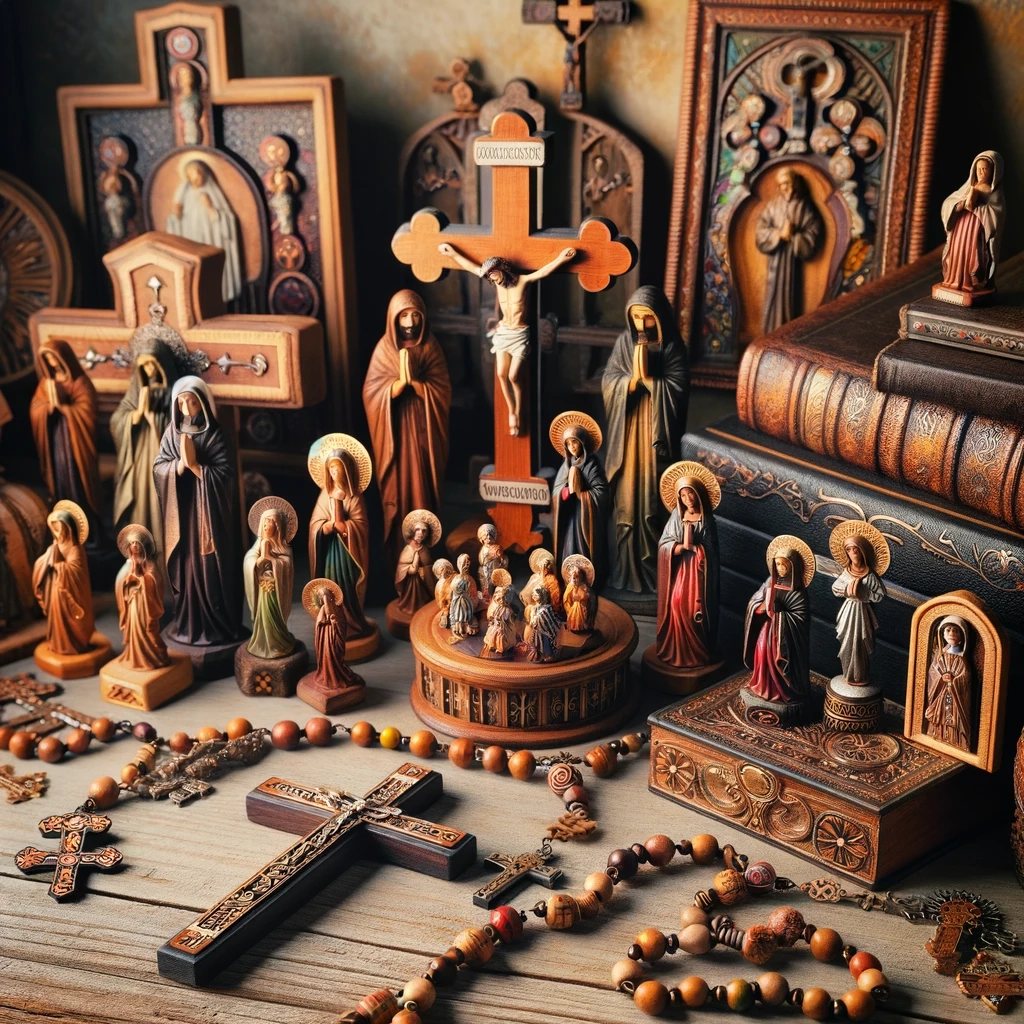The Stoup: Meaning and Use
The stoup is common in Catholic churches and other Christian places of worship. It is usually located near the entrance of the church. It is used to contain holy water. The faithful use holy water to make the sign of the cross.
Varieties and Materials of Waterworks
The stoup varies in shape, size and material. It is found in ceramics, terracotta, bronze, silver, resin, marble, porcelain and others. Some are hand-decorated with sacred images. Others are simpler or older, representing historical sacred art.
Italian cities such as Caltagirone are known for artistic ceramics. They produce hand-painted holy water stoups. These decorate churches with artistic and religious motifs.
Decorative Stoups
Stoups are not only sacred objects. They are often decorative elements in churches. They are chosen to harmonize with the decor and architectural style.
They are found in modern and artistic forms. They are useful in religious ritual and as design objects. They enrich the decor of homes and are collector’s items.
Meaning and Symbolism of Holy Water Stoups
They are significant in churches. In addition to their practical function, they are part of spirituality and religious practices. They are sacred symbols in Catholic and Christian practice.
Holy water fonts as Gifts of Worship
These sacred containers house holy water. They are used to make the sign of the cross. They are ideal gifts for religious events such as baptisms, confirmations, and weddings.
Available in various shapes and materials. They are often decorated with sacred images, religious motifs or Christian symbols.
Holy water fonts in the Home and Private Worship
These objects serve as liturgical instruments. They represent a spiritual and symbolic gift. They are objects of veneration and decorum. They add sacred spirit and a sense of devotion in the home or during celebrations.
They are appreciated by those who want to symbolize their faith. They serve as decorative and spiritually inspired elements.
Stoups as Collector’s Objects.
In some contexts, they are considered collector’s items. Especially the antique or artistic versions are prized. They are ideal gifts for special moments related to faith and spirituality.







